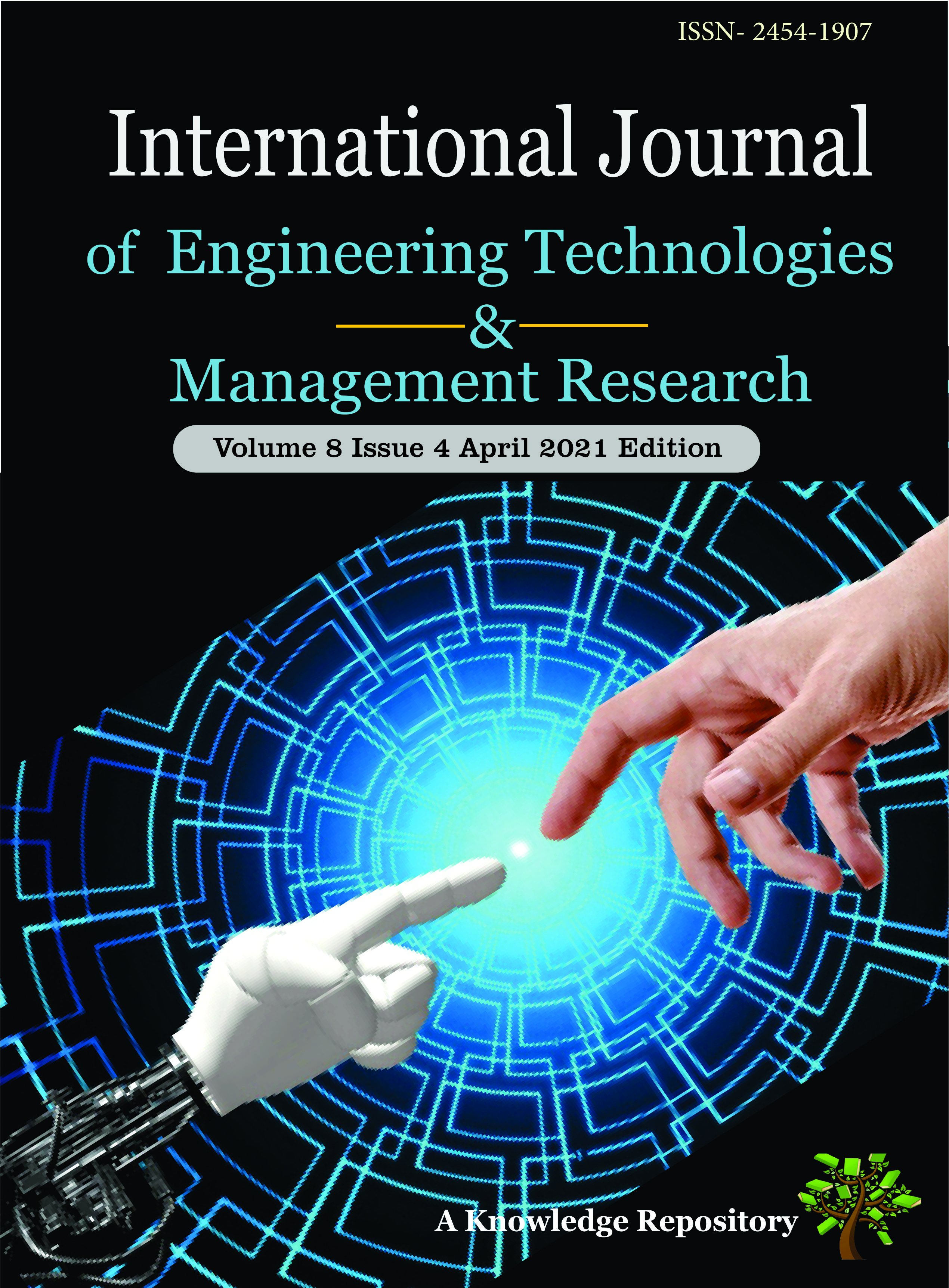EVALUATING PERSISTENCE AND DROPOUT RELATIVE TO CRISIS OF ATTRITION AND SOCIAL ISOLATION IN AN UNDERGRADUATE PROGRAM
DOI:
https://doi.org/10.29121/ijetmr.v8.i4.2021.929Keywords:
Retention Ratio, Social Isolation, Attrition, Crisis Of Attrition, Academic Success.Abstract
This research examines the crises of attrition in the students’ population and study programs using descriptive statistics interpretation for solving social isolation for traditional face-to-face classroom education. The study used a descriptive research design with ‘variable values’ to examine two-degree programs. The study used several testing methods to evaluate the statistical analysis of the social and academic characteristics of freshmen students in both the Informatics and Computer Science programs at the University of South Carolina Upstate from Fall 2018 to Fall 2019. The criterion variable was the student outcome (persistence or dropout), while the general structure matrix pattern was examined to validate the convergent factors. The methodology included a variance of the eigenfunction and values for interpreting the factor structure of the variable values. The findings suggest several mitigating factors which include improved persistence of “enrollment number, program delivery mode, GPA at time of completion and dropout, student orientation, and courses completed at the time of student dropout would help improve academic success for students.
Downloads
References
Adamopoulos, P. (2013). What Makes a Great MOOC? An Interdisciplinary Analysis of Student Retention in Online Courses. Thirty-Fourth International Conference on Information Systems, 1–21
Adebiaye R. (2016) Interpreting Crisis of Hidden Attrition and Social Isolation in an Asynchronous Learning system International Journal of Advanced Scientific Research & Development (IJASRD) ISSN 2394-8906, VOL 2, Issue 01, March 2015, PP.01-22.
Ali R.& Leeds E. (2009) The impact of Face-to-face orientation on Online Retention: A Pilot Study retrieved https://www.westga.edu/~distance/ojdla/winter124/ali124.html
Berge, Z.L., & Huang, Y.-P. (2004). A Model for Sustainable Student Retention: A Holistic Perspective on the Student Dropout Problem with Special Attention to e-Learning. Deosnews, 13(5), 26. Retrieved from http://citeseerx.ist.psu.edu/viewdoc/citations?doi=10.1.1.129.1495
Cofer, J.& Somers, P. (2001). What influences student persistence at two-year colleges? Community College Review, 29(3), 56-76. DOI: https://doi.org/10.1177/009155210102900304
Diaz, D., & Cartnal, R. (2006). Term length as an indicator of attrition in online learning. Retrieved July 9, 2006, from http://www.innovateonline.info/index.php?view:article&id=196
Gleason, B.J. (2004). Retention issues in online programs: A review of the literature. In Second AIMS International Conference on Management (pp.28–31).
Gütl, C., Rizzardini, R.H., Chang, V., & Morales, M. (2014). Attrition in MOOC: Lessons Learned from Drop-Out Students. In Learning Technology for Education in CloudMOOC and Big Data: Third International Workshop (Vol.446, pp.37–48). Santiago: Springer. http://doi.org/10.1007/978-3-319-10671-7_4 DOI: https://doi.org/10.1007/978-3-319-10671-7_4
Horn, L.J.& Premo, M.D. (1995). Profile of undergraduates in U.S. postsecondary education institutions: 1992-93.With an essay on undergraduates at-risk (NCES 96-237). U.S.D epartment of Education, National Center for Education Statistics. Washington, DC: U.S. Government Printing Office.
Hortulanus, R., Machielse M., & Meeuwesen, L. (2006). Social isolation in modern society. New York, NY: Routledge. DOI: https://doi.org/10.4324/9780203020142
Link, D.& Scholtz, S. (2000). Educational technology and faculty role: What you don’t know can hurt you. Nurse Educator, 25(6), 274-276. DOI: https://doi.org/10.1097/00006223-200011000-00011
Martinez, M. (2003). High Attrition Rates in E-learning: Challenges, Predictors, and Solutions. The eLearning Developers Journal, (July 14), 1–9. Retrieved from http://www.elearningguild.com/pdf/2/071403MGT-L.pdf
McMahon, M. (2013). A Study of the Causes of Attrition Among Adult on a Fully Online Training Course. Irish Journal of Academic Practice, 2(1), 1–26. Retrieved from http://arrow.dit.ie/cgi/viewcontent.cgi?article=1017&context=ijap
Patterson, B., & McFadden, C. (2009). Attrition in online and campus degree programs. Online Journal of Distance Education Learning Administration,12 (2).
Paulsen, M.B.& St. John, E.P.(2002). Social class and college costs: Examining the financial nexus between college choice and persistence. The Journal of Higher Education, 73(2), 189-236 DOI: https://doi.org/10.1080/00221546.2002.11777141
Tinto, V. (1993). Leaving College: Rethinking the Causes and Cures of Student Attrition. University of Chicago Press (2nd Ed.). ERIC.
Patterson, B., & McFadden, C. (2009). Attrition in online and campus degree programs. Online Journal of Distance Education Learning Administration,12 (2).
Rovai, A.P. (2003). In search of higher persistence rates in distance education online programs. Internet and Higher Education. http://doi.org/10.1016/S10967516(02)00158-6
Yorke, M. (2004). Retention, persistence, and success in on-campus higher Education, and their enhancement in open and distance learning. Open Learning.19 (1), 19-32. Retrieved April 12, 2006, from EBSCOHOST research database. DOI: https://doi.org/10.1080/0268051042000177827
Zavaleta D, Samuel K., Mills C (2015). Social isolation: A conceptual and measurement proposal. Oxford Poverty & Human Development Initiative OPHI WORKING PAPER. 2014;67 (Pg.9).
Published
How to Cite
Issue
Section
License
License and Copyright Agreement
In submitting the manuscript to the journal, the authors certify that:
- They are authorized by their co-authors to enter into these arrangements.
- The work described has not been formally published before, except in the form of an abstract or as part of a published lecture, review, thesis, or overlay journal.
- That it is not under consideration for publication elsewhere.
- That its release has been approved by all the author(s) and by the responsible authorities – tacitly or explicitly – of the institutes where the work has been carried out.
- They secure the right to reproduce any material that has already been published or copyrighted elsewhere.
- They agree to the following license and copyright agreement.
Copyright
Authors who publish with International Journal of Engineering Technologies and Management Research agree to the following terms:
- Authors retain copyright and grant the journal right of first publication with the work simultaneously licensed under a Creative Commons Attribution License (CC BY-SA 4.0) that allows others to share the work with an acknowledgment of the work's authorship and initial publication in this journal.
- Authors can enter into separate, additional contractual arrangements for the non-exclusive distribution of the journal's published version of the work (e.g., post it to an institutional repository or edit it in a book), with an acknowledgment of its initial publication in this journal.
- Authors are permitted and encouraged to post their work online (e.g., in institutional repositories or on their website) before and during the submission process, as it can lead to productive exchanges, as well as earlier and greater citation of published work.
For More info, please visit CopyRight Section






























